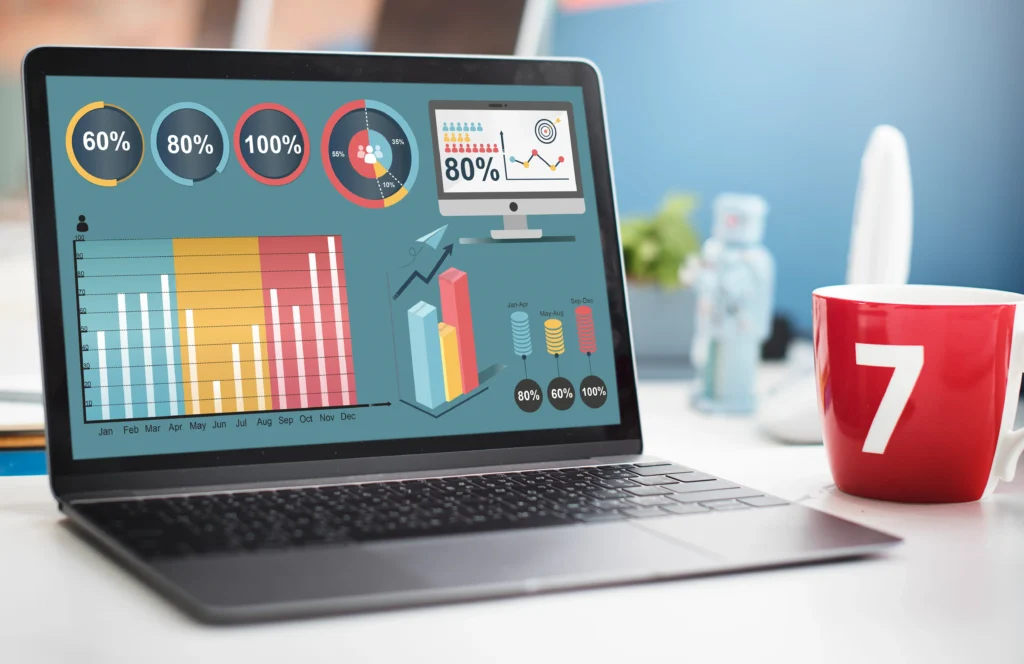Optimizing Your Digital Advertising : Best Practices for 2024
Optimize your digital advertising in 2024 with proven best practices. Boost ROI, enhance targeting, and maximize ad performance for business growth.

Introduction
In today’s rapidly evolving digital landscape, optimizing your digital advertising campaigns is crucial for staying ahead of the competition and achieving your marketing goals. As we look ahead to 2024, businesses must adapt their strategies to keep pace with changing consumer behaviors, emerging technologies, and shifting market conditions. This comprehensive guide will explore the best practices for optimizing your digital advertising campaigns in 2024. From leveraging first-party data and embracing video content to ensuring mobile optimization and prioritizing privacy, we’ll cover the key strategies and tactics that will help you drive better results and maximize your return on advertising spend (ROAS).
Whether you’re a seasoned digital marketer or just starting out, this guide will provide you with actionable insights and real-world examples to help you navigate the complex world of digital advertising. By implementing these best practices and staying agile in your approach, you’ll be well-positioned to succeed in the ever-changing digital landscape of 2024 and beyond.
Embrace AI and Machine Learning in Digital Advertising
To optimize your digital advertising campaigns for 2024, it’s crucial to embrace AI and Machine Learning (ML) technology. These powerful tools can revolutionize your approach to advertising by enabling you to analyze vast amounts of data and predict consumer behavior with remarkable accuracy.
By leveraging AI and ML in your digital advertising efforts, you can:
Personalize Ads: Tailor your advertisements to individual users based on their preferences, behaviors, and demographics. AI algorithms can analyze user data to deliver highly targeted ads that resonate with your audience, increasing the likelihood of engagement and conversion.
Optimize Bidding: Take advantage of automated bidding strategies powered by AI to optimize your ad spend. These algorithms can adjust bids in real-time based on factors such as competition, audience responsiveness, and conversion probability, ensuring that you get the most value for your investment.
Enhance Creativity: Use AI-generated insights to fuel your creative processes and develop more impactful ad content. Machine Learning algorithms can analyze past campaign performance, identify successful creative elements, and generate new ideas for ad variations. This enables you to experiment with different messaging, imagery, and formats to discover what resonates best with your target audience.
Incorporating AI and Machine Learning into your digital advertising strategy empowers you to unlock new levels of efficiency, effectiveness, and innovation. By harnessing the predictive power of these technologies, you can deliver more personalized, relevant, and engaging experiences to your audience, driving better results for your campaigns in 2024 and beyond.
Focus on First-Party Data
In “Optimizing Your Digital Advertising Campaigns: Best Practices for 2024,” the focus on first-party data is crucial. By prioritizing data collected directly from your own audience, such as website visitors, email subscribers, and past customers, you can gain invaluable insights into their behaviors, preferences, and interests.
This enables you to create highly targeted and personalized advertising campaigns that resonate with your audience on a deeper level. Moreover, leveraging first-party data enhances your ability to maintain control over data privacy practices, ensuring compliance with regulations and fostering trust with your audience. By placing emphasis on first-party data in your digital advertising endeavors, you can drive more meaningful interactions, enhance campaign performance, and ultimately achieve superior results for your business.
Leverage Video and Interactive Content

In 2024, video and interactive content will continue to dominate the digital advertising landscape. Businesses that embrace these formats will have a significant advantage in capturing the attention of their target audience and driving engagement.
The Rise of Video Advertising
Video ads have higher click-through rates and conversion rates compared to static ads.
Short-form video content, such as TikTok and Instagram Reels, is becoming increasingly popular among younger audiences.
Platforms like YouTube and Facebook prioritize video content in their algorithms, making it more visible to users.
Best Practices for Video Advertising
Create eye-catching, attention-grabbing video ads that convey your message within the first few seconds.
Optimize video ads for mobile viewing, as the majority of video content is consumed on smartphones.
Experiment with different video formats, such as vertical video, square video, and 360-degree video, to find what resonates best with your audience.
Leverage user-generated content and influencer marketing to create authentic and relatable video ads.
The Power of Interactive Content
Interactive content, such as quizzes, polls, and augmented reality (AR) experiences, encourages user engagement and creates a memorable brand experience.
Interactive ads have higher click-through rates and dwell times compared to static ads.
AR experiences allow users to virtually try on products or visualize how they would look in their own environment, which can lead to increased conversions.
Best Practices for Interactive Content
Create interactive content that is relevant, valuable, and entertaining for your target audience.
Ensure that the interactive experience is optimized for mobile devices and loads quickly.
Collect data from interactive content to gain insights into user preferences and behavior.
Integrate interactive content with your overall digital advertising strategy to create a cohesive brand experience.
By leveraging video and interactive content in your digital advertising campaigns in 2024, you can capture the attention of your target audience, drive engagement, and ultimately, improve your return on investment.
Optimize for Mobile

In 2024, mobile optimization will be a critical factor in the success of digital advertising campaigns. With the majority of internet traffic coming from mobile devices, businesses must ensure that their ads are optimized for seamless viewing and interaction on smartphones and tablets.
The Importance of Mobile Optimization
Mobile-friendly ads have higher click-through rates and conversion rates compared to non-optimized ads.
Google and other search engines prioritize mobile-friendly websites and ads in their rankings, making them more visible to users.
Poorly optimized mobile ads can lead to high bounce rates, negatively impacting ad performance and user experience.
Best Practices for Mobile Optimization
Create mobile-friendly ad creatives with clear, concise messaging and eye-catching visuals that are easy to view on small screens.
Ensure that landing pages are optimized for mobile, with fast loading times, easy navigation, and clear calls-to-action.
Use mobile-specific targeting options, such as location-based targeting and device targeting, to reach users on the go.
Experiment with mobile-friendly ad formats, such as vertical video, carousel ads, and interactive content, to engage users in a mobile-first environment.
Monitor mobile ad performance and make data-driven decisions to optimize campaigns for better results.
Leveraging Mobile-Specific Features
Utilize mobile-specific features, such as click-to-call buttons and location extensions, to drive immediate action from users.
Incorporate mobile-friendly features like image carousels and video into your ad creatives to create a more engaging experience.
Leverage mobile-specific targeting options, such as geofencing and beacon targeting, to reach users in specific locations and deliver highly relevant ads.
By optimizing your digital advertising campaigns for mobile in 2024, you can reach a wider audience, improve user experience, and drive better results for your business.
Invest in Programmatic Advertising
Programmatic advertising has revolutionized the digital advertising landscape, and in 2024, it will continue to be a crucial component of any successful digital advertising strategy. By leveraging automation and data-driven decision-making, programmatic advertising allows businesses to optimize their ad spend and reach their target audience more effectively.
The Benefits of Programmatic Advertising
Improved Targeting: Programmatic advertising enables precise targeting based on user demographics, interests, behaviors, and location, ensuring that ads are delivered to the right audience.
Real-Time Optimization: Programmatic platforms continuously analyze ad performance and adjust targeting, bidding, and creative to optimize results in real-time.
Increased Efficiency: Automation reduces the manual effort required to manage ad campaigns, allowing businesses to scale their advertising efforts more efficiently.
Better Transparency: Programmatic platforms provide detailed reporting and analytics, giving businesses a clear understanding of their ad performance and return on investment
Best Practices for Programmatic Advertising
Develop a comprehensive data strategy: Collect and unify first-party data from various sources to create detailed user profiles and improve targeting accuracy.
Utilize advanced targeting options: Leverage programmatic targeting options like contextual targeting, audience targeting, and retargeting to reach users at different stages of the buyer journey.
Experiment with different ad formats: Test various programmatic ad formats, such as display, video, and native ads, to find the most effective solutions for your business.
Continuously monitor and optimize: Regularly analyze campaign performance data and make adjustments to targeting, bidding, and creative to improve results.
Ensure brand safety: Implement brand safety measures to protect your brand’s reputation and avoid ad placement on inappropriate or irrelevant content.
Leveraging Programmatic Advertising Platforms
Utilize demand-side platforms (DSPs): DSPs allow businesses to access multiple ad exchanges and networks, providing a centralized platform for managing and optimizing programmatic campaigns.
Explore private marketplaces (PMPs): PMPs offer a more controlled environment for programmatic buying, enabling businesses to access premium inventory and negotiate directly with publishers.
Consider managed service providers: Managed service providers offer end-to-end programmatic solutions, including strategy, campaign management, and optimization, making it easier for businesses to implement and scale their programmatic advertising efforts.
By investing in programmatic advertising in 2024, businesses can optimize their digital advertising campaigns, reach their target audience more effectively, and drive better results for their marketing efforts.
Prioritize Privacy and Compliance
In 2024, the digital advertising landscape will continue to evolve, with increased focus on consumer privacy and data regulations. Businesses must prioritize privacy and compliance in their digital advertising campaigns to maintain trust, avoid legal issues, and ensure long-term success.
The Changing Privacy Landscape
The phasing out of third-party cookies will require businesses to rely more on first-party data and alternative targeting methods.
Stricter data privacy regulations, such as the General Data Protection Regulation (GDPR) and the California Consumer Privacy Act (CCPA), will mandate greater transparency and user consent in data collection and usage.
Consumers are becoming more aware of their data rights and are demanding more control over how their information is used for advertising purposes.
Best Practices for Privacy and Compliance
Obtain explicit consent from users before collecting and using their data for advertising purposes.
Implement robust data governance policies and procedures to ensure the secure handling and storage of customer data.Provide clear and transparent privacy policies that explain how customer data is collected, used, and protected.
Leverage privacy-friendly targeting methods, such as contextual advertising and cohort-based targeting, to reach your audience without relying on individual user data.
Stay up-to-date with evolving data privacy regulations and adjust your advertising practices accordingly to maintain compliance.
Building Trust through Privacy-Focused Advertising
Demonstrate your commitment to privacy and data protection to build trust with your customers.
Offer users more control over their data, such as the ability to opt-out of targeted advertising or access and delete their personal information.
Collaborate with industry organizations and regulatory bodies to advocate for privacy-focused advertising standards and best practices.
Leveraging Privacy-Enhancing Technologies
Explore the use of privacy-enhancing technologies, such as differential privacy and homomorphic encryption, to protect user data while still enabling targeted advertising.
Utilize identity resolution solutions that respect user privacy, such as cookieless tracking and device-based targeting.
Invest in data clean rooms and other secure data-sharing environments to enable targeted advertising without compromising user privacy.
By prioritizing privacy and compliance in your digital advertising campaigns in 2024, you can build trust with your customers, maintain regulatory compliance, and position your business for long-term success in the evolving digital landscape.
Measure and Analyze Performance

Measuring and analyzing the performance of your digital advertising campaigns is crucial for optimizing your strategy and achieving your desired results. In 2024, businesses will need to focus on data-driven decision making and utilize advanced analytics tools to gain insights into their advertising efforts.
The Importance of Performance Measurement
Measuring campaign performance allows you to identify what’s working, what’s not, and where to allocate your advertising budget for maximum impact.
Performance data provides valuable insights into your target audience’s preferences, behaviors, and pain points, enabling you to create more effective ads.
Regular performance analysis helps you stay agile and adapt your digital advertising strategy to changing market conditions and consumer trends.
Key Performance Indicators (KPIs) to Track
Impressions: The number of times your ad is displayed to users.
Click-Through Rate (CTR): The percentage of users who click on your ad after seeing it.
Conversion Rate: The percentage of users who complete a desired action, such as making a purchase or filling out a form.
Cost per Acquisition (CPA): The average cost of acquiring a new customer or lead.
Return on Ad Spend (ROAS): The revenue generated for every dollar spent on advertising.
Best Practices for Performance Measurement
Define clear, measurable goals for your digital advertising campaigns and align your KPIs accordingly.
Utilize advanced analytics tools, such as Google Analytics and Adobe Analytics, to track and analyze campaign performance.
Implement cross-channel tracking to understand how different advertising channels work together to drive conversions.
Regularly review and analyze performance data to identify trends, patterns, and areas for improvement.
Share performance insights with cross-functional teams to ensure alignment and inform overall marketing strategy.
Leveraging AI and Machine Learning for Performance Optimization
Utilize AI-powered tools to automate data collection, analysis, and optimization, freeing up time for strategic decision making.
Leverage machine learning algorithms to predict future performance based on historical data and make real-time adjustments to campaigns.
Implement A/B testing and multivariate testing to identify the most effective ad creatives, targeting options, and landing pages.
By prioritizing performance measurement and analysis in your digital advertising campaigns in 2024, you can make data-driven decisions, optimize your advertising spend, and drive better results for your business.
Conclusion:
As digital advertising continues to evolve, staying updated with the latest best practices is essential for success. By embracing AI and machine learning, leveraging first-party data, focusing on video and interactive content, optimizing for mobile, investing in programmatic advertising, prioritizing privacy and compliance, and continually measuring and analyzing performance, you can optimize your digital advertising campaigns for 2024 and beyond. These strategies will not only enhance your campaign effectiveness but also ensure you stay ahead in the competitive digital landscape.
FAQs
Optimizing digital advertising campaigns provides several key benefits:
- Improved targeting and personalization to reach the right audience
- Higher engagement, click-through rates, and conversions
- Better return on ad spend (ROAS) and overall marketing ROI
- Ability to adapt to changing market conditions and consumer trends
- Competitive advantage by staying ahead of the curve in digital advertising
Some top best practices include:
- Focusing on first-party data collection and leveraging it for targeting
- Embracing video and interactive content formats
- Ensuring mobile optimization for seamless ad viewing on smartphones
- Investing in programmatic advertising for real-time optimization
- Prioritizing privacy and compliance to build trust with customers
- Continuously measuring and analyzing campaign performance
Mobile optimization will be critical in 2024, as the majority of internet traffic and digital ad engagement happens on smartphones and tablets. Key benefits of mobile optimization include:
- Higher click-through rates and conversions on mobile devices
- Improved user experience and reduced bounce rates
- Better visibility and rankings in mobile search results
- Ability to leverage mobile-specific features like click-to-call and location targeting
With the phasing out of third-party cookies, first-party data will become increasingly valuable for precise targeting and personalization in 2024. Best practices include:
- Robust first-party data collection across owned channels
- Obtaining explicit consent from customers to use their data
- Unifying customer data into a single view for comprehensive insights
- Leveraging first-party data for audience segmentation and ad personalization
- Continuously analyzing first-party data to optimize campaigns
AI and machine learning will play a key role in automating and optimizing digital advertising in 2024. Benefits include:
- Automated data collection, analysis, and real-time optimization
- Predictive modeling to forecast future performance and make adjustments
- Implementing advanced A/B testing and multivariate testing at scale
- Personalized ad creative and content generation based on user preferences
- Intelligent budget allocation across channels and audiences

